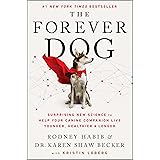Does your dog lunge for their water or food bowl with an enthusiasm that borders on chaos? Many dog owners experience the challenge of a puppy or adult dog that struggles with patience when excited, particularly around meal times or when a favorite toy is involved. The brief video above offers a straightforward, effective technique for beginning to teach your dog to be patient and wait, especially when being given their water bowl.
This method focuses on setting clear boundaries and rewarding calm behavior, which is a cornerstone of positive reinforcement dog training. Instead of engaging in a struggle, a system is put in place where the dog naturally learns that patience leads to a reward. This foundational understanding of “wait” can be instrumental in shaping a dog’s overall impulse control, leading to a calmer and more well-behaved companion.
Understanding the Importance of Dog Patience and Impulse Control
Patience in dogs is not an inherent trait; it is a learned skill that can greatly improve their quality of life and the harmony within a household. When a dog understands how to wait, it means they are capable of controlling their immediate urges and impulses. This can manifest in various situations, from not bolting out the door to waiting calmly for their dinner or for a walk.
The concept of impulse control for dogs is often misunderstood. It is not about suppression but about teaching an alternative, more desirable behavior that is ultimately rewarded. By teaching a dog to pause and wait for a cue, their ability to make good choices is gently fostered. This contributes to a dog’s emotional regulation, helping them to navigate exciting or stressful situations with greater ease.
The Psychology Behind the “Wait” Command
The “wait” command is distinct from “stay,” though both involve stillness. “Stay” typically means remaining in a specific position until released, often at a distance from the owner. “Wait,” conversely, usually implies a temporary pause or a permission to proceed, often when an exciting object or event is present. For instance, a dog might be asked to “wait” before going through a doorway or before approaching their food bowl.
The technique demonstrated in the video leverages this distinction, focusing on the dog’s ability to self-regulate when a high-value item, like a water bowl, is presented. The absence of conflict and the clear consequence (bowl removed if they lunge, bowl given if they wait) allows the dog to make the connection themselves. This passive approach often yields more lasting results than constant verbal corrections, which can sometimes escalate excitement rather than reduce it.
Applying the Water Bowl Technique to Teach Your Dog to Wait
The method shown involves a simple setup that minimizes confrontation while maximizing the opportunity for a dog to learn. For this exercise, a short leash is a valuable tool, not for pulling or correcting, but for establishing a physical boundary. This gentle restraint removes the option for the dog to lunge, allowing them to focus on what behavior will earn them the reward.
Begin by attaching a leash to your dog and stepping on it, ensuring the leash is short enough that the dog cannot reach the bowl when it is placed on the floor. The water bowl should be presented just out of their immediate reach, creating a slight tension. It is important to avoid saying “no” or pushing the dog away; instead, the emphasis is placed on allowing the dog to figure out the desired action through observation and self-correction.
Step-by-Step Guide to Patience Training
When the dog attempts to lunge or mouth the bowl, the leash will gently prevent them. This action effectively communicates that direct access is not currently possible. The bowl is simply held steady or placed on the floor slightly out of reach; it is not forcefully pulled away or hidden. The owner then patiently waits for the dog to offer a desired behavior, which is typically sitting down.
At first, your dog may try various behaviors—pawing, sniffing, perhaps even whining. The key is to remain calm and patient yourself, allowing the dog time to process the situation. The moment your dog sits or offers any calm, polite behavior, the bowl should be immediately lowered or released for them to drink. If the dog gets up again, the bowl is gently lifted out of reach, and the waiting process is repeated until a sit is offered once more. This consistent cause-and-effect relationship helps solidify the association between calm behavior and reward.
Expanding “Wait” Beyond the Water Bowl
Once your dog has mastered the “wait” command with the water bowl, this valuable skill can be generalized to many other aspects of their life. Think of all the situations where a little more patience from your dog would be beneficial. The principles of the water bowl exercise can be adapted to teach impulse control for doors, car entry, meal times, and even greeting guests.
For instance, at the doorway, you can have your dog on a leash and ask them to “wait” before opening the door. If they surge forward, the door is immediately closed or access is blocked, then reopened once they settle. This teaches them that the privilege of going outside is earned through calm behavior. Similarly, the food bowl can be placed down, and the dog is asked to “wait” until a release cue is given, ensuring they do not gobble their food without permission.
Increasing Duration and Distance for Reliable Patience
As your dog becomes more proficient, the duration of the “wait” can be gradually increased. Start with just a second or two, then slowly build up to longer periods. Similarly, the distance between you and the dog, or the dog and the tempting item, can be extended. Always remember to practice in calm, distraction-free environments before moving to more stimulating ones.
Consistency is paramount in dog training. Every interaction is a learning opportunity for your dog, so it is important that everyone in the household reinforces the “wait” command in the same way. By making patience a regular part of your dog’s routine, you will observe a remarkable improvement in their overall behavior and responsiveness to commands.
Common Pitfalls in Teaching Your Dog Patience
When teaching a dog to be patient, some common mistakes are often made that can hinder progress. One prevalent error is giving up too soon. Dog training requires persistence and understanding that learning takes time, especially for complex behaviors like impulse control. Frustration on the owner’s part can be picked up by the dog, making the learning process more difficult.
Another pitfall is relying too heavily on negative reinforcement or punishment, such as yelling “no” or physically pushing the dog away. This can create fear or anxiety and may not teach the dog what *to do* instead. The gentle guidance of the leash and rewarding desired actions is far more effective. Inconsistent training is also detrimental; if rules are applied sporadically, dogs become confused about expectations.
Ensuring Success with Positive Reinforcement
To ensure success, it is important that the training experience is always positive and rewarding for your dog. Use a cheerful tone, plenty of praise, and high-value treats or their favorite toy as rewards when they successfully wait. The goal is to make the act of waiting a positive association, not a punishment.
Breaking the training into short, frequent sessions can also be more effective than long, drawn-out ones. Dogs, especially puppies, have shorter attention spans. By keeping sessions brief and ending on a positive note, your dog will be more eager to participate in future training, reinforcing the desire to learn patience.
The Profound Benefits of a Patient and Controlled Dog
The effort invested in teaching your dog patience yields a multitude of rewards, transforming both their life and yours. A dog with strong impulse control is generally a calmer, more predictable companion, which reduces stress for everyone in the household. Imagine walks where your dog doesn’t pull incessantly, or greetings that are polite instead of overwhelming.
Beyond convenience, a patient dog is a safer dog. Their ability to wait for cues can prevent them from darting into traffic or from getting into dangerous situations. This enhanced control also deepens the bond between owner and dog, as communication becomes clearer and mutual understanding grows. Implementing these straightforward techniques for teaching your dog patience will undeniably contribute to a happier, healthier relationship.









